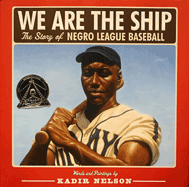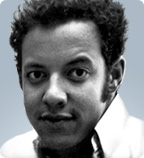This post reveals approaches to professional writing and research in the words of extraordinary authors and illustrators of books for children and teens.
Use this article to consider various aspects of inquiry, including:
- Wondering about questions that drive research
- Seeking information and revising research questions
- Reflecting on completed work to see what new questions emerge

Kadir Nelson (author/illustrator) on We Are the Ship: The Story of Negro League Baseball (Disney-Hyperion 2008)
When I was [writing and] thinking of the voice, I was thinking of the late Buck O’Neil. I was trying to write the manuscript in Buck’s voice. He really told it like it was and he had this really sweet personality. I dedicated the book to Buck.
[Creating the book] is really like a really big puzzle. I wanted to make sure that it was accurate because there are tons of baseball fans and baseball nuts who will be counting the seams on the baseballs. I took the time. I took seven years to make sure that I got all these details.

[For creating the illustrations] I actually posed for all the paintings. What I did was set my camera up, and I have a baseball uniform that I bought from Ebbets Field. I’ll suit up, and take a picture of [me posing] and use it as a reference.
Watch Kadir Nelson read We Are the Ship.
Questions related to Kadir Nelson’s inquiry process:
- How could Nelson accurately portray Buck O’Neil? What did he need to know?
- What resources could Nelson use to research O’Neil’s life experiences?
- Why was suiting up to illustrate the characters important to Nelson as an author and an illustrator?

Angela Johnson (author) on The First Part Last (Simon & Schuster 2003)

At first [before writing The First Part Last], I believed Bobbys story was over. Bobby was initially written as a secondary character in my novel Heaven. He was eventually revived out of love that a group of sixth grade girls had for him from the Manhattan School of Children. They loved his character. They were entranced by his adoration of his daughter and the compassion he showed to his friends.
I was still skeptical, but soon changed my mind on a subway in New York City as I sat watching a young man with a baby who could have indeed been a real life Bobby. At that moment Bobby was reborn. I raced to my hotel room and wrote the first chapter, where he became the protagonist in The First Part Last.
Listen to Angela Johnson read from The First Part Last.

Christopher A. Myers (author/illustrator) on Black Cat (Scholastic 1999)
When I did the book Harlem, everyone told me that they loved the way I made the city look beautiful. Now, if someone tells you that the painting or the collage you did of your mother made her look beautiful, what are they really saying about your mom? I was mad!

So in the defense of my city, I did Black Cat, and all of the illustrations are actual photographs of the city that I painted over. I took maybe 5,000 photos all around New York, all around the neighborhoods in the city that so many people say are ugly or dangerous or whatever, but that I feel are like the neighborhoods I grew up in.
Then I chose about 50 of those photos and inserted the cat into each one. As I walk around the city even to this day, I find little empty spaces where I think my cat, the protagonist of the book, might be lurking.
Listen to Christopher Myers read from Black Cat.
Questions related to Angela Johnson’s and Christopher Myers’ inquiry process.
- How did readers’ reactions to former books motivate these artists to work on the companion books? How did their original work lead to new work?
- How did Johnson and Myers see things in everyday life that inspired them and helped clarify ideas for their stories?
The insights from this column are part of the TeachingBooks.net Coretta Scott King Book Award Curriculum Resource Center.
This post was originally published as an article in Carin Bringelson and Nick Glass’ monthly column for School Library Monthly.

Enjoyed finding your blog.